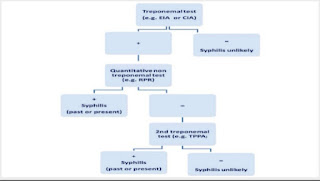When the Thymus Tells a Story: Evaluating Thymic Abnormalities in a Child With Suspected Myasthenia
Hello Glias !
Today’s pediatric case was a 7-year-old with signs suggestive of myasthenia gravis — fatigability and ptosis — but negative for anti–acetylcholine receptor antibodies.
Given the presentation, our task was to rule out thymic pathology, particularly thymoma or thymic hyperplasia, on imaging.
Why the Thymus Matters in Pediatrics
The thymus, though often forgotten after infancy, plays a central role in T-cell maturation and immune regulation.
It enlarges rapidly in infancy, peaks at puberty, and then involutes gradually, replaced by fat with age. However, in children, normal thymus can appear large — and this can easily raise unnecessary alarms unless interpreted in the right context.
📚 According to Manchanda et al. (WJCP, 2017):
“The thymus attains maximum weight at puberty and gradually becomes replaced by fat and involutes with age. However, it can grow back (rebound) after stress or illness.”
When Is It Normal and When To Suspect Pathology?
Normal & Physiological Thymus
Homogeneous soft-tissue density in anterior mediastinum
Smooth convex margins, quadrilateral or triangular in shape
May show “sail sign” or “wave sign” on chest X-ray (classic pediatric findings)
Moves with respiration and cardiac pulsation on ultrasound (“starry sky” appearance due to echogenic foci)
👉 Normal CT density: ~80 HU in early childhood → decreases to ~56 HU as fatty involution progresses
At 7 years, the thymus is typically still visible, sometimes quadrilateral, occasionally showing partial fatty change. A normal homogeneous gland with smooth margins should not be mistaken for a mass.
When to Think It’s Abnormal
1. Thymic Hyperplasia
May follow infection, chemotherapy, or corticosteroid use (rebound hyperplasia)
Appears as diffuse symmetric enlargement with normal vessels and smooth contour
Microscopic fat present → signal drop on opposed-phase MRI
Can occur in autoimmune diseases, including myasthenia gravis (even when antibodies are negative)
2. Thymoma
Rare in children (<5% of pediatric mediastinal tumors)
Usually associated with myasthenia gravis (even if seronegative)
Appears as focal, lobulated, heterogeneous mass
May show calcification, necrosis, or invasion of mediastinal structures on CT
MRI shows low T1, high T2 signal with enhancement post-contrast
👉 Clue: In contrast to hyperplasia, thymoma lacks microscopic fat and shows no signal drop on opposed-phase MRI.
Our Case
In our patient:
CT chest showed a homogeneous, smoothly contoured anterior mediastinal structure appropriate for age.
No focal mass, no invasion, and no calcification or cystic component were seen.
Findings consistent with normal thymic morphology for a 7-year-old.
Thus, thymoma was excluded, and the clinical picture of seronegative myasthenia was likely autoimmune without structural thymic involvement.
Take-Home for Clinicians and Radiologists
Thymic size alone doesn’t indicate pathology — shape, contour, and density are key.
Physiological prominence is common until adolescence; avoid over-calling “mass.”
Rebound hyperplasia can mimic tumor but preserves smooth margins and microscopic fat.
Thymoma is rare in children but consider it when there is focal asymmetry or infiltration.
MRI with chemical-shift imaging helps distinguish hyperplasia from neoplasm.
💬 Conclusion
The pediatric thymus is dynamic — it grows, shrinks, and even “reawakens” after stress.
Understanding normal involution patterns prevents misdiagnosis and unnecessary anxiety, while recognizing red flags ensures timely identification of true thymic pathology.
“Awareness of normal thymic variants and imaging features of pathology is essential to avoid unnecessary intervention and missed diagnoses.” — Manchanda et al., WJCP, 2017
- Written By Dr. Upasana Y



Comments
Post a Comment